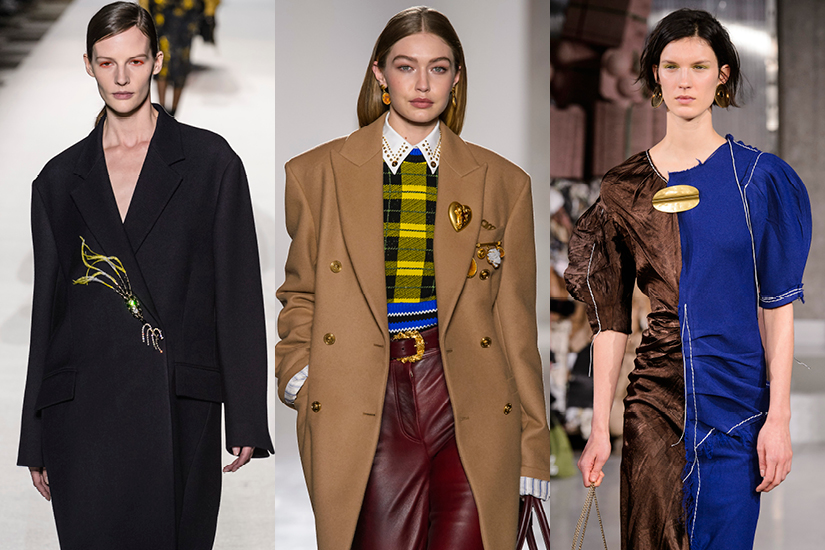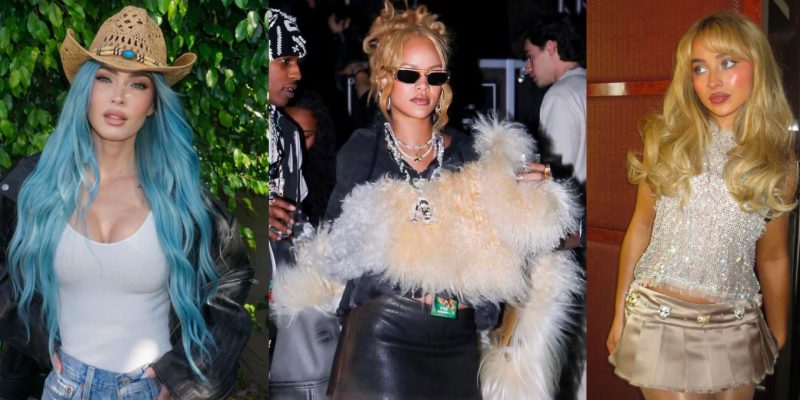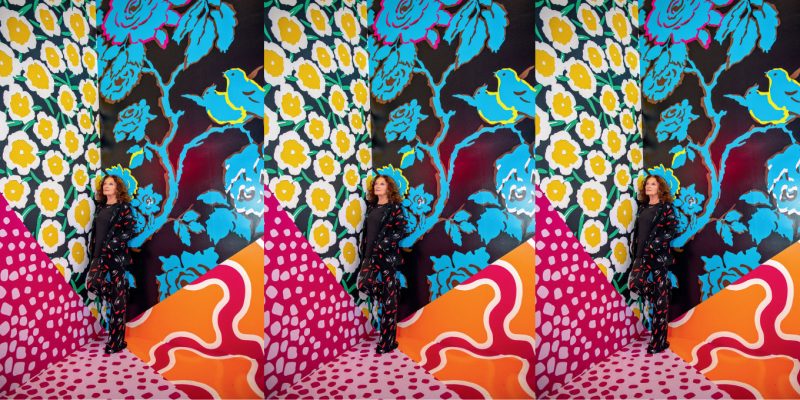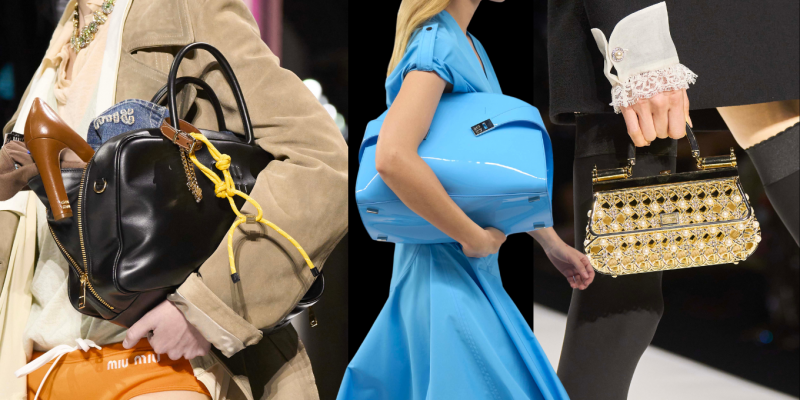Trends
Did the Brooch Finally Become Cool?
It's time we re-examined our approach to the brooch.
by : Julia Seidl- Sep 13th, 2018

I’ve always been enamoured with a wreathlike faux-diamond-encrusted brooch I inherited from my grandmother. It lives in my jewellery box along with my stackable rings and delicate necklaces. But more than a decade after receiving it, I’ve never worn it. I keep my grandmother’s brooch because it has sentimental value, but I can’t quite figure out how to work it into my wardrobe.
Looking to Instagram for inspiration is of little use. I have yet to see the brooch dominate my feed the way Oscar de la Renta-inspired tassel earrings (the most searched jewellery item of 2017, according to fashion search engine Lyst) or gold hoops have in the past few seasons. This unpopularity isn’t helped by the brooch’s somewhat matronly reputation. In our youth-obsessed culture, it is often associated with women like Queen Elizabeth. Maybe if Meghan Markle started pinning brooches on her Givenchy dresses, I would too.
According to Sara Maggioni, director of retail and buying for trend-forecasting firm WGSN, there has been a small brooch revival in recent seasons, championed mainly by Gucci’s Alessandro Michele. “A dressing-up-box approach to styling is at the heart of Michele’s maximalism,” she says. Eagle-eyed fashion fans may have also noticed a sprinkling of brooches on the fall 2018 runways, like at Roksanda, Louis Vuitton and Versace. But Maggioni thinks it would be a stretch to herald 2018 as the year of the brooch. Statement earrings 2.0 they are not.
Today’s apparel trends—unstructured, off-the-shoulder silhouettes and light fabrics—are part of the reason the brooch remains untouched in our jewellery boxes. “Women wear fewer fabrics that would substantiate the weight of a brooch,” says Frank Everett, senior vice-president and sales director of the luxury division at Sotheby’s. By contrast, the Victorian era was marked by high necklines that weren’t necklace-friendly, which is why the brooch rose to prominence, says Maggioni.
The brooch hit a high note during the art-deco period and again in the ’80s thanks to Princess Diana and Pretty in Pink-era Molly Ringwald. But it was the two-piece skirtsuit that dominated the 1950s that really brought the brooch back, partly as a reaction to the political climate of the time, says vintage-jewellery expert Carole Tanenbaum. “It was a feel-good time. The problems of the Second World War were over, and housewives felt adorned when they put on a brooch.”
Today’s climate is less feel-good and more do-good, which is perhaps why the statement pin—the brooch’s more polit-ical cousin—has had a major resurgence. From the CFDA’s hot-pink “Fashion stands with Planned Parenthood” buttons to the “Time’s Up” pins at this year’s Golden Globes, the accessory is an easy way to deliver a message. But the experts I spoke with argue that the brooch can be subtly, yet equally, expressive.

Queen Elizabeth and Donald Trump Image by: Getty
The Internet went into overdrive this past summer speculating about whether Queen Elizabeth employed #BroochWarfare when Donald Trump visited the United Kingdom by using the jewels on her shoulder as a diplomatic middle finger aimed at the president and his policies. In her 2009 book, Read My Pins, former U.S. Secretary of State Madeleine Albright explains that her brooch choices were a way to express herself on the job (like wearing a snake brooch after the Iraqi media called her an “unparalleled serpent”). “With these women, there are no accidents,” says Everett.
Perhaps there’s more to the brooch than meets the eye. That it can carry a powerful message is enough reason to pin one on, even for a skeptic like me.
This article appears in the October 2018 issue of ELLE Canada.
Newsletter
Join our mailing list for the latest and biggest in fashion trends, beauty, culture and celebrity.
Read Next

VIP
9 Stylish Icelandic Adventures Tailored to Fashion-Conscious Canadians
Iceland’s stylish escapades for the fashion-forward Canadian traveller blend elegance with adventure.
by : Contributor Content- Apr 15th, 2024

Fashion
The Best-Dressed Stars at Coachella Weekend One
Here's what your favourite celebs (and influencers!) wore to kick off Coachella's first weekend.
by : Lauren Knowles- Apr 15th, 2024

Culture
ELLE Escapes: Savannah
Where to go, stay, eat and drink in “the Hostess City of the South.”
by : ELLE- Apr 15th, 2024




